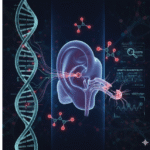The intersection of technology and healthcare has led to remarkable advancements, and one of the most exciting areas of innovation is 3D printing. From prosthetics to potential organ transplants, 3D printing is revolutionizing the way we approach medical treatments and patient care. This blog delves into the innovations in 3D-printed prosthetics and implants, the potential of 3D printing in organ transplantation, and the ethical and regulatory issues that come with bioprinting.
Innovations in 3D-Printed Prosthetics and Implants
3D printing, also known as additive manufacturing, has significantly impacted the field of prosthetics and implants. Traditional prosthetics can be expensive, time-consuming to produce, and may not always offer the best fit or functionality for the patient. 3D printing addresses these issues by offering customized, affordable, and quickly produced prosthetic solutions.
Customized Prosthetics
One of the standout benefits of 3D printing is customization. Using detailed scans of a patient’s limb, designers can create a prosthetic that fits perfectly, enhancing comfort and usability. This level of customization ensures that each prosthetic is unique to the user, accommodating individual anatomy and movement patterns.
Affordability and Accessibility
The cost-effectiveness of 3D printing is another game-changer. Traditional prosthetic limbs can cost thousands of dollars, making them inaccessible for many. 3D printing significantly reduces production costs, allowing for high-quality prosthetics to be made available at a fraction of the cost. This affordability is particularly beneficial for patients in low-income regions or those without adequate insurance coverage.
Enhanced Functionality and Aesthetics
Modern 3D-printed prosthetics are not only functional but also aesthetically pleasing. Designers can incorporate a wide range of materials and colors, making prosthetics that are both practical and visually appealing. Advanced designs even include robotic elements that provide greater mobility and control, closely mimicking natural limb movement.
3D-Printed Implants
Beyond prosthetics, 3D printing is making strides in the creation of medical implants. Custom implants tailored to the patient’s specific anatomy can lead to better surgical outcomes and faster recovery times. For example, 3D-printed titanium implants have been used in complex orthopedic surgeries to replace damaged bones and joints with high precision and durability.
The Potential of 3D Printing in Organ Transplantation
While 3D-printed prosthetics and implants are already making a significant impact, the potential of 3D printing in organ transplantation is a frontier that holds promise for the future. The shortage of donor organs is a critical issue, and 3D bioprinting could offer a viable solution.
Bioprinting Basics
Bioprinting involves layer-by-layer deposition of cells and biomaterials to create tissue-like structures. Using a patient’s own cells reduces the risk of rejection, which is a significant problem in traditional organ transplants. This technology is still in the experimental stage, but the advancements are promising.
Printing Simple Tissues
Researchers have successfully bioprinted simple tissues such as skin, cartilage, and blood vessels. These advancements are paving the way for more complex structures. For example, bioprinted skin can be used for burn victims, while bioprinted cartilage can help those with joint injuries. The ability to print blood vessels is crucial for developing more complex organs, as these vessels provide the necessary nutrients and oxygen to sustain tissue.
Towards Complex Organs
The ultimate goal of bioprinting is to create fully functional organs like hearts, livers, and kidneys. While we are not there yet, significant progress is being made. For instance, researchers have managed to print miniaturized organ structures known as organoids, which mimic the function of full-sized organs. These organoids are invaluable for medical research and drug testing.
The journey towards printing fully functional organs involves overcoming significant challenges, such as creating the intricate vascular networks required to keep tissues alive and ensuring the printed organs can integrate seamlessly with the patient’s body.
Ethical and Regulatory Issues in Bioprinting
With great innovation comes great responsibility. The advancements in 3D bioprinting bring a host of ethical and regulatory challenges that need to be addressed to ensure the technology is used safely and ethically.
Ethical Considerations
One of the primary ethical concerns is the source of the cells used for bioprinting. Using a patient’s own cells is ideal, but when donor cells are used, issues of consent and ownership arise. There is also the question of how far we should go with bioprinting. For instance, if we can enhance organ function beyond normal human capabilities, should we do it?
There are also concerns about the accessibility of bioprinted organs. If this technology becomes available, ensuring it is accessible to all and not just the wealthy will be a significant ethical challenge. The potential for bioprinting to widen the gap between those who can afford advanced medical treatments and those who cannot must be addressed proactively.
Regulatory Challenges
Regulating 3D bioprinting is complex due to the novelty and rapid advancement of the technology. Regulatory bodies like the FDA are still developing frameworks to evaluate the safety and efficacy of bioprinted tissues and organs. These frameworks must ensure that bioprinted products are safe for patient use while not stifling innovation.
Another challenge is standardization. There must be consistent standards for bioprinting processes, materials, and end-products to ensure reliability and safety across the industry. This includes developing guidelines for the long-term monitoring of patients who receive bioprinted tissues or organs.
Conclusion
3D printing in medicine holds incredible potential, from providing affordable, customized prosthetics to the future possibility of bioprinted organs. As we navigate this exciting frontier, it is crucial to balance innovation with ethical and regulatory considerations. By addressing these challenges head-on, we can ensure that the benefits of 3D printing in healthcare are realized safely and equitably, transforming patient care for the better.





